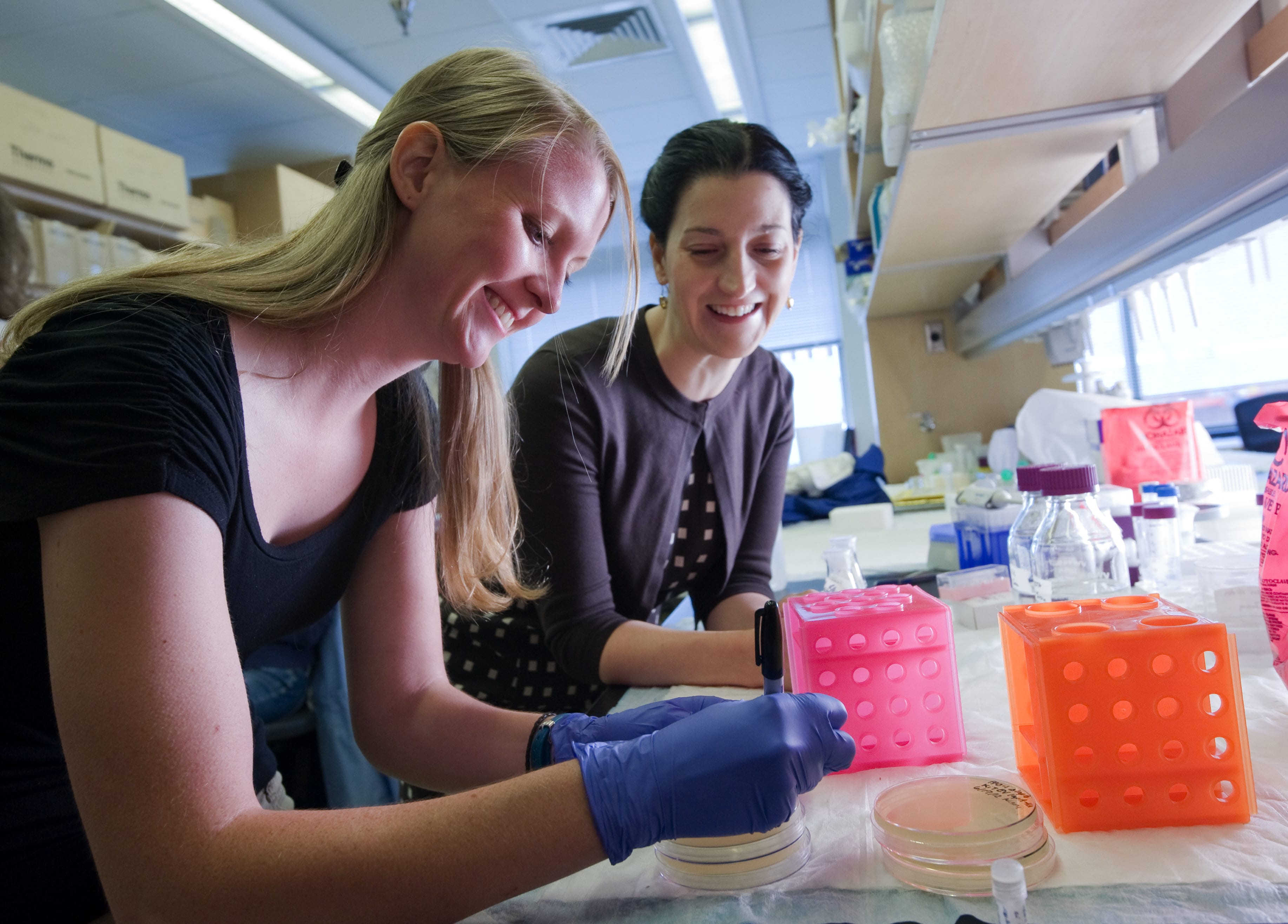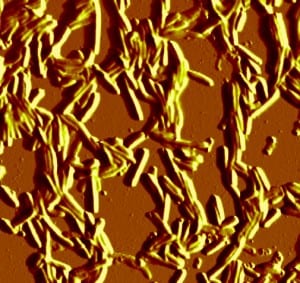Research
Biological Interaction Forces Laboratory
Research in my lab is focused on understanding how bacteria adhere to surfaces. Bacterial adhesion and biofilm formation are at the core of a wide range of problems that visibly and in large scale affect society, from recurrent ear infections and dental plaque in individuals, to contamination with pathogens of drinking water supplies, food products or agricultural produce reaching the public, and biofouling of surfaces as varied as hospital surgical instrumentation and naval ships. Fundamental understanding of these problems requires knowledge of the interactions between the bacterial surface and other target surfaces to which the microbes adhere, which is often a precondition for their infective effects. The inability to perform molecular-scale characterizations of bacterial surfaces has rendered scientists and engineers unable to explain bacterial adhesion based on a first-principles approach.
A complete list of publications and citations
Information about the IGERT Graduate Training Program
Selected recent publications:
Strauss, J., Kadilak, A., Cronin, C., Mello, C.M, and T. A. Camesano. Binding, inactivation, and adhesion forces between antimicrobial peptide cecropin P1 and pathogenic E. coli, Colloids and Surfaces B: Biointerfaces, 2010, 75:156-164.
Liu, Y., Pinzón-Arango, P.A , Gallardo-Moreno, A.M., and T.A. Camesano. Direct adhesion force measurements between E.coli and human uroepithelial cells in cranberry juice cocktail. Molecular Nutrition and Food Research, 2010, 54:1744-1752.
Ivanov, I.E., Kintz, E.N., Porter, L.A., Goldberg, J.B., Burnham, N.A., and T.A. Camesano. Relating the physical properties of Pseudomonas aeruginosa lipopolysaccharides to virulence using atomic force microscopy, Journal of Bacteriology, 2011, 193:1259-1266.
Tao, Y., Pinzón-Arango, P.A , Howell, A.B., and T.A. Camesano. Oral consumption of cranberry juice cocktail inhibits molecular-scale adhesion of uropathogenic Escherichia coli. Journal of Medicinal Food, 2011, 14:739-745.
Pinzón-Arango, P.A , Holguin, K., and T.A. Camesano. Impact of cranberry juice and proanthocyanidins on the ability of Escherichia coli to form biofilms, Food Science and Biotechnology, 2011, 5:1315-1321.
Wang, K.F., Nagarajan, R., Mello, C.M., and T.A. Camesano. Characterization of supported lipid bilayer disruption by chrysophsin-3 using QCM-D. J. Phys. Chem. B, 2011, 115 (51), pp 15228–15235. http://pubs.acs.org/doi/abs/10.1021/jp209658y
Marcott, S., Ada, S., Gibson, P., Camesano, T.A., and R. Nagarajan. Novel application of polyelectrolyte multilayers as nanoscopic closures with hermetic sealing, ACS Applied Materials & Interfaces, 2012, 4 (3), pp 1620–1628 . http://pubs.acs.org/doi/full/10.1021/am201784c
Olsson, A.J.L., Arun, N., Kanger, J.S., Busscher, H.J., Ivanov, I.E., Camesano, T.A., Chen, Y., Johannsmann, D., van der Mei, H.C., and P.K. Sharma. The influence of ionic strength on the adhesive bond stiffness of oral streptococci possessing different surface appendages as probed using AFM and QCM-D, Soft Matter, 2012, 38:9870-9876.
Abu-Lail, L., Tao, Y., Pinzon-Arango, P.A., Howell, A., and T.A. Camesano. Using atomic force microscopy to measure anti-adhesion effects on uropathogenic bacteria, observed in urine after cranberry juice consumption, Journal of Biomaterials and Nanobiotechnology, 2012, 3:533-540.
Ivanov, I.E., Boyd, C.D., Newell, P.D., Schwartz, M.E., Turnbull, L., Johnson, M.S., Whitchurch, C.B., O’Toole, G.A., and T.A. Camesano. Atomic force and super-resolution microscopy support a role for LapA as a cell-surface, biofilm adhesin of Pseudomonas fluorescens, Research in Microbiology, 2012, 163:685:691.
Some of our currently funded projects include:
- IGERT: Training Innovative Leaders in Biofabrication, NSF
- Anti-Adhesion Mechanisms of Cranberry Constituents on E. coli, NIH R15
- Environmental cytotoxicity of nanoparticles: differentiating “nanoparticulate” from “molecular scale” effects. NSF, CBET
- Polyelectrolyte Multilayers for Non-Mechanical Closures. Defense Threat Reduction Agency
- Molecular Scale Characterization of the Mechanism of Action of Antimicrobial Peptides on Lipid Membranes Using Quartz Crystal Microbalance with Dissipation. U.S. Army Natick Soldier Center


